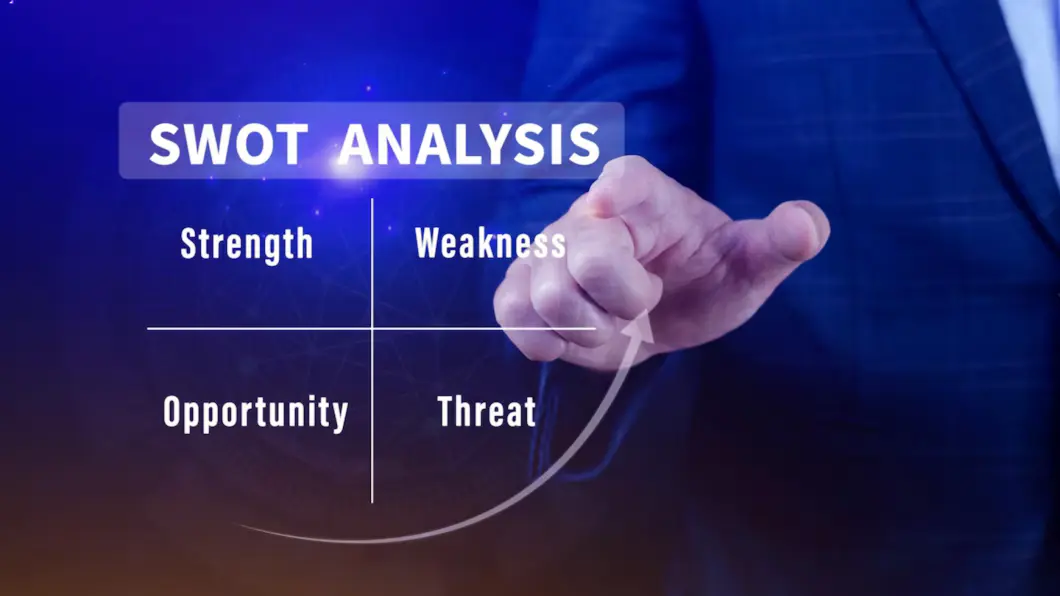Running a garment manufacturing business is not easy. You have to keep yourself up-to-date with the latest market trends and consumer preferences. Sourcing high-quality raw materials at affordable prices isn’t easy either. Additionally, you need to keep a watch on various supply chain challenges and ensure the timely delivery of your products.
Manually managing all business operations isn’t easy. Higher labor dependence can not only make your processes slower, but also increase the possibility of human errors. With the advent of new technologies such as ERP software, you can stay ahead of your competitors and take advantage of India’s thriving fashion industry. Read on to find out how.
What is ERP for Garment Manufacturing?
ERP for Garment manufacturing is a tailor-made software that lets you gain total control of your business operations, ensure strict adherence to quality standards, and proactively manage business risks.
Enterprise Resource Planning tool provides sophisticated production planning and supply chain tools to help you improve cost-effectiveness, ensure swift movement of goods, and respond to changing consumer needs. It provides deep analytical insights and custom reporting to aid faster & informed decision-making.
Outlook of the Indian Garment Industry
According to a news report in the Financial Express, the Indian textiles and apparel market is projected to grow to $350 billion by the year 2030. There are several factors believed to contribute to industrial growth, including rising disposable income among urban Indians, modern fashion trends, and increasing demand for clothes that reflect India’s rich heritage and diverse traditions. Furthermore, the Indian Government is taking strategic measures to boost local garment manufacturing and curb the indirect entry of Chinese fabric routed through neighbouring Bangladesh.
You May Also Like:- What is Manufacturing ERP Software?
Challenges Faced by Garment Manufacturing Companies
→Cost-cutting
It is critical for every business growth to have reduced costs and it is one of the major business challenges in the garment industry.
With Sage X3 apparel manufacturing ERP software, your garment business would need less warehouse space through efficient planning. Also, it can minimize operational costs while delivering enhanced business process management.
→Streamlining Data
The garment industry has the toughest product environments among the rest of industries since fashion styles, trends, colors, and sizes are constantly changing. It becomes difficult for garment manufacturers to constantly update software databases with all real-time data each time.
The garment industry ERP will keenly address these major concerns through automation and user-interactive product load modules. Also, it has become fluently managing manufacturing processes as well as styles along with items having varied features, colors, sizes, costs, and much more.
→Managing Customers
Maintaining a stronger customer base is quintessential for every business. Satisfied customers remain loyal while keeping your business high. This requires ingenious garment ERP software that can help build simple order management right from the beginning till the end through a single database.
→Shortage of Upgraded Technology
The garment industry relies heavily on upgraded technology for its operations and efficient management. With the rapid advancements in technology, garment ERP systems are essential for garment manufacturers to stay competitive. However, the shortage of upgraded technology has become a major challenge for the industry as it has failed to keep up with the changing needs of the industry.
→Managing High Waste
The garment industry produces large amounts of waste from fabric scraps, production leftovers, and rejected goods. As the demand for more affordable and faster clothing increases, the challenge of managing this waste becomes even greater. Hence, to deal with this high waste, manufacturing companies need advanced software.
Benefits of Garment Manufacturing ERP
→Precise Data Management
Garment-related businesses usually store product data with just one variant. It also deals with the color, size, fabric, or even style of that single apparel.
Sage X3 garment manufacturing ERP software space will help with vertical as well as horizontal elements while combining them to get a single variant with unique code.
→Varied Images
Garment companies show a single image per item. Hence, it might become problematic for them to display every item from varied colors or views.
Sage X3 ERP for garment manufacturing offers customization for the improvised association of multiple images with one product. It gives customers a comprehensive and clear view of the products in your showroom.
→Easy Packaging
Packing garments are a major challenge in the garment business. Sage X3 ERP for the garment manufacturing industry offers a 360° customized solution that would automatically calculate the weight of products.
The ERP for packaging industry would measure the shipping cost while saving a huge amount of time and cost as well. It will also assist in making unit conversions from weight to length.
→Customer Satisfaction
The garment industry ERP software offers decent prices and also boasts promotion management. This assists businesses to build improved customer relationships and also ensures a greater percentage of customer retention.
The garment manufacturing software also assists in after-sales service. Moreover, the feature that makes Sage X3 system unique is its capability to precisely connect to data collection systems such as RFIDs, and more.
→Minimized Operational Cost
By leveraging Sage 300 garment ERP, you can reduce your operational costs by streamlining all your business processes from purchasing, production, inventory management, and quality control, to sales, finance, customer service, and more.
The garment manufacturing ERP software offers instant and clear visibility into all your operations, enabling you to make better decisions and gain control of the complete manufacturing process. The maintenance management software also supports efficient inventory management and enables accurate forecasting, thereby reducing the risk of overstocking or understocking.
→Real-time Reporting
Sage X3 garment ERP offers manufacturers the benefit of real-time reporting, making it easier to keep track of all aspects of the production process. The software enables manufacturers to continuously monitor production and analyze data quickly, enabling them to make informed decisions in a timely manner. By having a dynamic Sage 300 ERP system in place, garment manufacturers can increase their efficiency by providing accurate data on production and inventory levels, enabling them to respond to customer orders immediately.
Moreover, real-time reporting can help garment businesses better manage their supply chain and inventory levels. With Sage X3 ERP, garment manufacturers can gain visibility into the performance of their supply chain, helping them better manage their inventory levels and reducing their risk of stock-outs.
Features of ERP for Garment manufacturing
♦Inventory Management
Garment manufacturing ERP software has an inventory management tool that can help track items as per the parameters mentioned. The inventory management system also has customizable dashboards through which you can access the inventory to manage styles, images, features, costs, and more.
With the inventory management module, you can easily fetch real-time data along with precise stock information about what products are still there in the warehouse and what is there in order.
♦Warehouse Management
The warehouse management feature of the garment ERP helps to control and track warehouse operations right from the time when a good enters the warehouse till the good makes an exit.
The warehouse management system also has shipping integration, raw material management, and much more. The best ERP system also involves cross-docking, direct pick & pack, and more in its warehouse management feature.
♦Demand Forecasting
Demand forecasting allows businesses to accurately predict what products customers will be interested in and how much of each product to produce to meet that demand. This helps companies save money and ensure the right products are available for customers when they need them.
The business intelligence software can be used to analyze the optimal production rate, inventory levels, and pricing for each product. Also, it can provide insights into upcoming trends and help companies anticipate customer needs.
♦Vendor Management
The vendor management feature enables garment manufacturers to manage their vendors, automate purchase orders, and track shipments more effectively. It helps to reduce costs and improve operational efficiency while also streamlining the process of vendor selection. The feature also brings easy communication and ensures necessary data is quickly accessible.
With features such as contract management, RFQs, PO tracking, and invoicing, Sage X3 garment ERP software helps you manage all aspects of vendor management in a streamlined and efficient manner.
♦Material Requirements Planning
Material requirements planning (MRP) feature enables garment factories to effectively manage resources, track production, and ensure that all material requirements are met. The fixed asset management software helps factories to plan and forecast the raw materials needed, prioritize orders, and track the progress of production.
MRP also helps to optimize production and delivery times. By monitoring the progress of production, companies can make sure that all the materials and components are ready for each step of the manufacturing process. It helps to reduce wasted time and resources, leading to improved efficiency and cost savings. The feature ensures that production remains cost-effective and on time.
♦Customer Relationship Management
CRM feature helps manage customer information, keep track of customer interactions, and help build relationships with customers. With CRM, garment businesses can identify customers’ concerns, preferences, and shopping habits. This helps in providing enhanced customer service and improved customer retention.
It can help you stay organized by storing customer contact information, sales history, customer support tickets, service contracts, and much more. It also helps to analyze customer data in order to find out potential opportunities for growth. With the end-to-end and integrated manufacturing ERP software, you get the capability to track customer data across multiple channels, which allows you to monitor customer activities and create better strategies for your business.
♥Sales Management
The sales management system helps businesses to track customer orders, sales performance, commissions, and return orders. It also enables businesses to create and manage discounts, set pricing strategies, and more. This feature allows businesses to maximize their sales, increase customer satisfaction, and gain a better understanding of their customer base. With this excellent feature, businesses can effectively streamline their sales process and gain a competitive edge in the market.
♦Procurement Management
The procurement feature of garment ERP stands out as an incredibly useful tool. This feature helps businesses manage their suppliers, inventory, and purchase orders. It also helps to ensure that all procurement tasks are carried out accurately and on time.
Moreover, it helps businesses reduce their costs and improve their purchase margins. With procurement software, businesses can easily track their purchases, monitor supplier performance, and monitor inventory levels. In short, the procurement management feature of garment ERP helps businesses save costs, improve efficiency, and increase profits.
♦Supply Chain Management
With its supply chain management feature, garment ERP allows you to monitor and control your operations in real-time from a centralized location. The supply chain management software provides insights into the entire supply chain from raw material sourcing to customer timely delivery to help you identify opportunities to optimize operations and reduce costs.
With its advanced data analytics and reporting capabilities, garment ERP makes it easy to share inventory information with suppliers, track shipments, and manage production schedules. With this feature, garment ERP provides visibility into the entire supply chain, enabling businesses to make informed decisions and optimize their operations.
Make Smarter Decisions with Sage X3
Garment ERP software can be a game-changer for the garment industry. It empowers businesses with real-time tracking & analysis, better planning, and cost-efficiency. With a single integrated system, you can mitigate modern-day business challenges and simplify business complexities.
Sage X3 is the best-in-class solution that provides higher visibility across your business operations and lets you handle various business operations seamlessly. It supports better planning and resource allocation, allowing you to thrive in a highly complex business scenario.
Frequently Asked Questions (FAQs)
1.What is ERP in Garment Industry?
ERP in garment industry is a specialized software that supports the discrete and diverse needs of the garment industry. It provides robust tools for merchandise planning, cost analysis, quality control, supply chain management, and deep analytical & reporting.
2.What is ERP for Garment Industry?
ERP for garment industry is a fully customizable and scalable solution that caters to the different needs of the garment industry. It assists day-to-day business activities such as planning, procurement, inventory management, project management, financial management, risk management & compliance, among others.
3.What is Sage X3 in Garments?
Sage X3 is the best ERP software used in India’s garment industry. It provides a plethora of features to foster innovation & growth:
- Superior production planning & scheduling
- Intelligent order tracking and customer management
- Automate invoice generation and financial reporting
- Reduce delivery rates and improve customer experience
- Streamline payment processing with AR automation
- End-to-end quality and compliance management
4.What is PDM in Garment Industry?
Product Data Management (PDM) refers to the system of data management. It simplifies the management of all product-specific data into a single database and fosters collaboration between different teams and individuals. The ultimate aim of the PDM is to reduce the time market.







